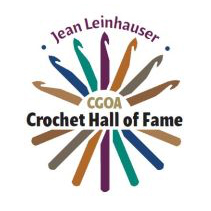From Grace’s Guide British Industrial History
Critchley Brothers of Wimberely and Dark Mills, Brimscombe, Glos. London Office: 40 Monkwell Street, EC. (1922)
of Brimscombe, Stroud, Glos. Telephone: Brimscombe 3. Cables: “Critchleys, Brimscombe”. (1929)
Ditto Address and Cables. Telephone: Brimscombe 2208-9. (1947)
- 1836 Company established by Henry Critchley and others.
- 1883 Wimberley Mills was purchased by Uriah and Francis E. Critchley for their newly formed pin-making business.
- The firm, called Critchley Brothers, extended its business to include the manufacture of wood and bone knitting-needles and crochet-hooks, at the beginning of the 20th century, when they had acquired the adjoining Dark Mill in Stroud; later those articles were made in the locally-produced plastic called Erinoid.
- 1909 Incorporated as a private limited company.
- 1914 Pin manufacturers. Specialities: English pins for all trades; hair pins, knitting pins, crochet hooks, penholders, meshes, netting needles, stilettos in wood and bone, bone carvings, umbrella handles, yard sticks, etc. Employees 300.
- 1922 Listed Exhibitor – British Industries Fair. Manufacturers of Brass and Plated Pins, Hairpins, Wood and Bone Knitting Pins, Crochet Hooks, Penholders, etc.
- 1929 Listed Exhibitor – British Industries Fair. Manufacturers of all kinds of Knitting Pins, Crochet Hooks, Hairpins, Solid Headed Pins for Tailors and Dressmakers, Banks, Stationers and the Home. Penholders.
- 1947 Listed Exhibitor – British Industries Fair. Manufacturers of Knitting Needles in Plastic and Metal, Knitting Accessories, Needle Gauges, Row Counters, Crochet Hooks, Pins in Iron, Brass and Steel, Hair Pins, Hair Grips, Celiagrips, Hair Curlers, Hat Pins, Penholders.
- Post-WWII. After the Second World War the firm specialized in making plastic fittings for the electrical industry.
- 1973 They continued this branch of production, together with the manufacture of land drainage tube when approximately 300 people were employed on the Wimberley and Dark Mill sites; the manufacture of aluminium knitting-needles was given up in that year.
- A single stone mill building then survived at the Wimberley Mill site among extensive factory buildings put up in the 1960s.
